Orthopedist-traumatologist is specialist doctor who treats all elements of the musculoskeletal system, is engaged in the prevention and diagnosis of body injuries of various etiology and complexity. To be examined by this specialist, you must make an appointment. An orthopedist-traumatologist conducts examinations in public health institutions, as well as in private clinics.
Record content:
- 1 What is an orthopedic traumatologist?
- 2 What should be in an orthopedic doctor's office?
- 3 What does a child and adult specialist do?
- 4 Features of pediatric orthopedics
- 5 When should i see a doctor?
- 6 How is the appointment with the doctor
- 7 What tests do I need to take when I go to an orthopedist-traumatologist?
-
8 What diagnostic methods does the specialist use?
- 8.1 X-ray
- 8.2 MRI and CT
- 9 What organs does an orthopedist treat?
-
10 What diseases does an orthopedic traumatologist treat?
- 10.1 Congenital musculoskeletal pathologies
- 10.2 Acquired orthopedic pathologies
-
11 Treatment methods
- 11.1 Conservative methods
- 11.2 Surgical intervention
- 12 Video about orthopedic traumatologists
What is an orthopedic traumatologist?
An orthopedic traumatologist is a qualified physician who is simultaneously a specialist in two areas of clinical medicine. This is orthopedics and traumatology.
The functional duties of a doctor are to study, diagnose and prevent injuries of the muscular system and bone tissue of the musculoskeletal system, the consequences of which are functional disorders of certain parts of the body.
To conduct a high-quality examination of patients, the doctor uses instrumental diagnostic methods in the form of CT, MRI, X-ray. Treats acquired deformities of bones and muscles, and also deals with the elimination of congenital malformations.
A specialist of this profile deals with the therapy of patients whose musculoskeletal system is destroyed under the influence of rheumatological processes.
The orthopedist-traumatologist takes part in the rehabilitation of patients who have received injuries to the limbs and other parts of the body as a result of professional sports. Develops a schematic course for the restoration of muscles, tendons, joints and connective tissue.
In the course of his professional activity, an orthopedic traumatologist is engaged in prosthetics of patients who have received severe injuries of the musculoskeletal system. The doctor selects corsets, prostheses, bandages, insoles, special shoes, which should fill the missing part of the body, or eliminate signs of tissue deformation.
To eliminate the consequences of injuries and congenital anomalies of development, the doctor uses conservative methods of treatment in the form of drugs, physiotherapy and surgical intervention.
What should be in an orthopedic doctor's office?
The orthopedic doctor's office is divided into 2 main areas. This is the reception area, where the table, office equipment and cabinets with medical records are installed. Here the doctor conducts a preliminary conversation with the patient, enters informational data on the patient's condition, detected symptoms and complaints.
The second zone of the orthopedic doctor's workplace consists of an area where a direct examination of the patient is carried out. It houses an orthopedic table, a couch with a rigid base, and medical instruments.
In public health institutions, the main diagnostic examination methods used by the orthopedic traumatologist are outside his office. In private clinics, the doctor's work area may include a separate room for performing simple surgical operations.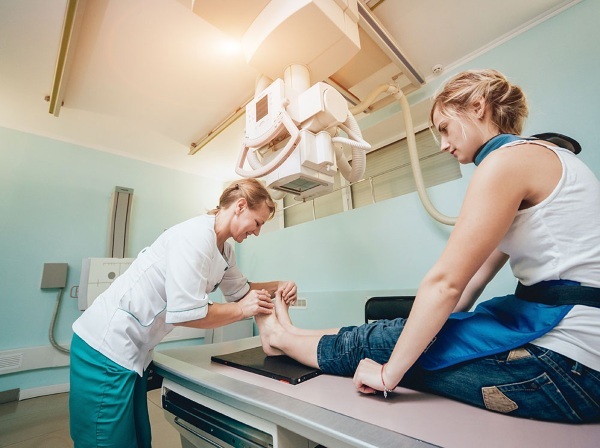
For example, surgery on the fingers, correction of the incorrect position of the hand. Also in adjacent rooms can be placed equipment for X-ray examination of the patient's musculoskeletal system.
What does a child and adult specialist do?
The main task of a pediatric orthopedist is not only the treatment of injuries and elimination of their consequences, but also the fight against defects in the physical development of muscle tissues, tendons, bones and joints.
The doctor examines the child, detects pathologies, and then develops a system of effective measures, aimed at correcting a functional or aesthetic deficiency of a specific element of the musculoskeletal apparatus.
The methods of therapy are determined individually, depending on the type of diseased part of the body, the degree of deformity and the age of the child. Particular attention is paid to the health of the spine, feet, hands, joints. For the prevention of deformational changes in bone tissue and the prevention of defects in physical development, special exercises of physiotherapy exercises and massage are being developed.
An adult orthopedic surgeon is engaged in the diagnosis, prevention and treatment of injuries already received by patients of the corresponding age group. Effective therapy for patients in this category provides for a preliminary examination of a person, a diagnostic study using special devices and medical equipment.
After receiving detailed information about the condition of the damaged or deformed part of the musculoskeletal system and diagnosis, the doctor selects those methods of treatment that are advisable to use in this clinical situations.
Adult patients who have lost a limb due to trauma are also examined by an orthopedic surgeon. The doctor selects a high-quality prosthesis that compensates for dysfunction of the musculoskeletal system.
For faster recovery of damaged muscles, tendons and joints, a physiotherapy scheme, technique of therapeutic massage and exercises aimed at restoring the mobility of the damaged part body.
Features of pediatric orthopedics
Pediatric orthopedics is the most difficult area of clinical medicine. A sick child should be registered with a dispensary, regularly visit an orthopedist-traumatologist and follow the doctor's instructions.
The following features of pediatric orthopedics are distinguished:
- control over the physical condition of the child in the early periods of his development (independent head retention, sitting, the first steps in accordance with age);
- systematic development and growth of the bone tissue of the spine;
- exclusion of deformities of feet, hands, vertebrae;
- monitoring of stable rotation of the tibia;
- full development of the knee joint (signs of deformation, inflammation, dystrophy of bone and connective tissue are excluded);
- periodic examination of the foot to exclude the formation of an absolutely flat surface (diagnosis is carried out from the moment when the child reaches the age of 2-3 years);
- prevention of various diseases of the musculoskeletal system.
When pathologies of the development of bone tissue or muscular system are detected, the pediatrician orthopedist-traumatologist selects corsets, special shoes, insoles, bandages. This is part of a comprehensive treatment aimed at restoring the full functions of the musculoskeletal system.
In addition, a pediatric orthopedic traumatologist advises the child's parents on the correct choice of shoes, furniture, and a diet rich in vitamin D, calcium, phosphorus, and proteins.
When should i see a doctor?
An orthopedist-traumatologist (what a doctor of this profile treats can be clarified in the clinic's registry) conducts a comprehensive diagnostics of the musculoskeletal system, and also prevents the development of complications arising in the post-traumatic period.
Consultation with a doctor of this specialization is recommended in the following cases:
- in a child or an adult, signs of skeletal deformation appear (this symptomatology can be manifested by curvature of the spine, curvature of the torso, changes in the shape of the upper and lower extremities, chest);
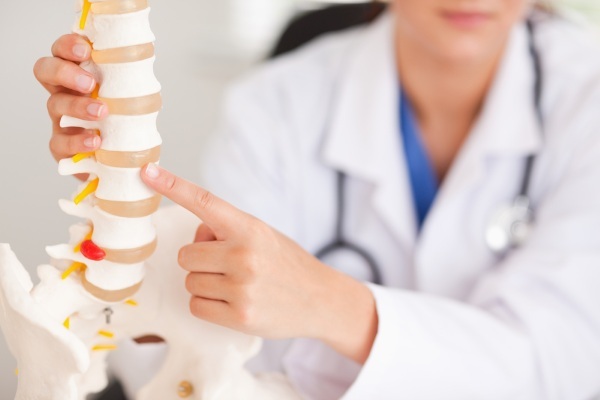
- there was an injury to the muscular system or bone tissue of a separate part of the body;
- tumor-like formations are found that are localized on the surface of the bones, are painful to palpation, or do not cause any feeling of discomfort;
- there is a sharp change in the shape of posture, a stoop appears, which continues to progress;
- impaired mobility in the joints, which is accompanied by dysfunction of the limbs and inflammatory processes in the tissues;
- there is a sharp or aching back pain that appeared after a previous injury, falling from a great height, lifting a heavy object;
- the need to select a high-quality prosthesis after a planned or traumatic limb amputation;
- flat feet or other deformative changes in the foot;
- pathologies of physical development in children of all age groups, which are associated with improper formation of the muscular system, skeleton, joints, bone and connective tissue.
Contacting a specialist should take place as early as possible. Timely diagnosis of diseases of the musculoskeletal system helps prevent further progression of the disease, as well as restore the functions of damaged parts of the body.
How is the appointment with the doctor
An orthopedist-traumatologist (what the doctor of this specialty treats is described in detail in the article below) is a specialist whose examination begins with an initial examination. The patient goes to the doctor's office and sits on a couch or chair. The doctor conducts a survey for the presence of complaints, finds out the current symptoms.
The doctor then examines that part of the patient's musculoskeletal system that is of concern or has been previously injured. Based on preliminary information, the orthopedist-traumatologist prescribes a referral for the patient to take tests and undergo instrumental diagnostics.
Based on the results of a comprehensive examination of the musculoskeletal system and obtaining a diagnostic conclusion, the stage of forming a treatment regimen begins. An orthopedist-traumatologist can apply a conservative therapy method using exclusively medication, or complex treatment measures.
In the latter case, drugs and surgery are used.
What tests do I need to take when I go to an orthopedist-traumatologist?
Orthopedist-traumatologist (what the doctor treats can be clarified with the clinic administrator, since some specialists conduct narrow-profile activities) prescribes the delivery of tests only after preliminary examination of the patient. Depending on the patient's complaints and the variety of symptoms, the following types of laboratory tests can be carried out.
| Types of analyzes | Purpose of the study |
| Clinical blood test | This is a basic analysis that reflects the general health of a patient. The doctor receives information about the cellular composition of the biological material, determines the presence of signs of an inflammatory process, excludes the factor of the possible presence of blood pathologies. |
| Biochemical examination of venous blood | This analysis is necessary to obtain detailed data on the biochemical components of the blood. Attention is drawn to the components that indicate pathologies of bone, muscle and connective tissue. Infectious microorganisms are detected, the pathogenic activity of which can lead to destruction of the musculoskeletal system For example, tuberculosis bacillus, chlamydia, pale spirochete, gonococcus. |
| Bone biopsy and histology | This type of analysis is performed in those clinical cases when the patient has signs of tumor damage to the joint or bone tissue. The task of physicians is to determine the type of extraneous neoplasm, its benign or malignant etiology.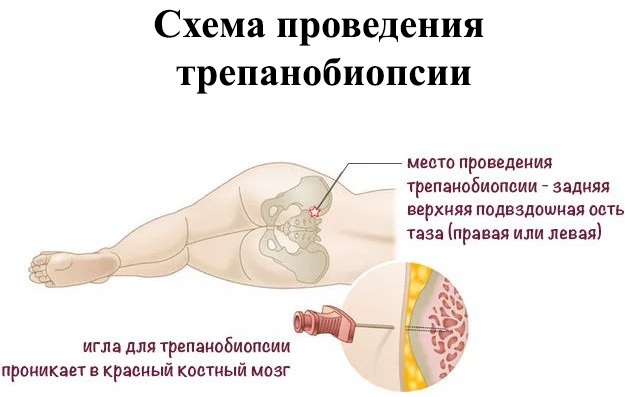
|
| Analysis of urine | Urine analysis is a standard analysis that is performed to obtain general information about the health of the body, to detect hidden inflammatory processes. For rent in the morning. |
The results of the above analyzes provide basic information that is used in the diagnosis process. In combination with these types of examination, instrumental types of diagnostics are used.
What diagnostic methods does the specialist use?
An orthopedic traumatologist treats all pathologies in accordance with the established WHO rules. He prescribes diagnostics to the patient, which displays comprehensive information about the state of all elements of the musculoskeletal system.
X-ray
Diagnostics using radiography is carried out in cases where a specific part of the musculoskeletal system, the pathological state of which was established based on the results of preliminary inspection.
The patient goes to the X-ray room, where he lies down on the surface of the couch. The medical professional places the fixation part of the X-ray device in the area of the damaged part of the body.
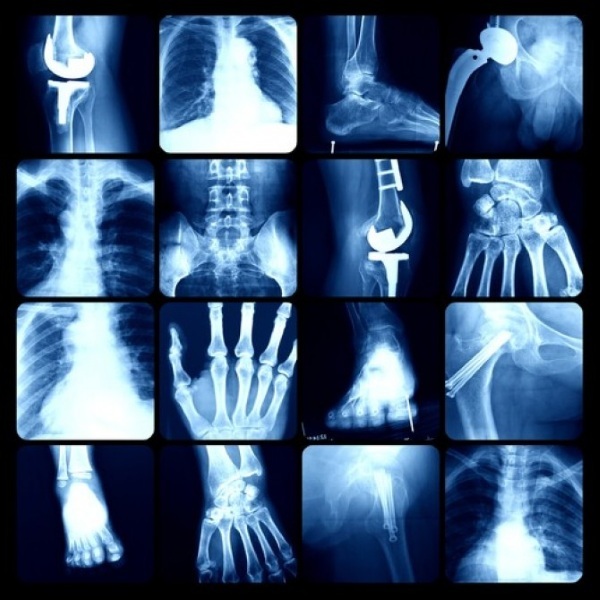
Then a picture of the joint, chest, skull, spine, pelvic region, upper or lower extremities is taken. The production of an X-ray image is carried out within 15-20 minutes, and its decoding is done personally by an orthopedic surgeon. Based on the results of this diagnostic method, further decisions are made about which treatment method is advisable to use in a given clinical situation.
MRI and CT
CT and MRI diagnostics are indicated for patients who have been admitted with severe or multiple injuries. musculoskeletal system, there are signs of fractures with displacement of bone tissue, or deformation.
The advantage of this examination method is that the doctor has the opportunity to examine all segments of the patient's skeleton and muscular system., to predict the risks of complications in the event of a surgical operation. Diagnosis with a tomograph is completely safe and painless.
What organs does an orthopedist treat?
An orthopedic surgeon deals with the treatment of the following human organs, which are actually elements of the musculoskeletal system:
- joints of the upper and lower extremities (provides for complex therapy of inflammatory processes, the consequences of trauma, prosthetics and the installation of artificial mechanisms);
- spine;
- bone tissue of the skeleton;
- muscular system;
- nerve endings, if their damage has arisen as a result of general trauma to the musculoskeletal system.
In the latter case, a neuropathologist is involved in the therapeutic process. Dental orthopedics provides for the treatment and prevention of diseases of the jaw apparatus, the installation of dentures.
What diseases does an orthopedic traumatologist treat?
An orthopedic traumatologist deals with the treatment of the following pathological conditions of the bone tissue and muscular system, which are congenital or acquired in the process of independent life.
Congenital musculoskeletal pathologies
Congenital pathologies include the following diseases of the musculoskeletal system:
- curvature of the cervical spine (torticollis);
- dysplasia of the hip joint;
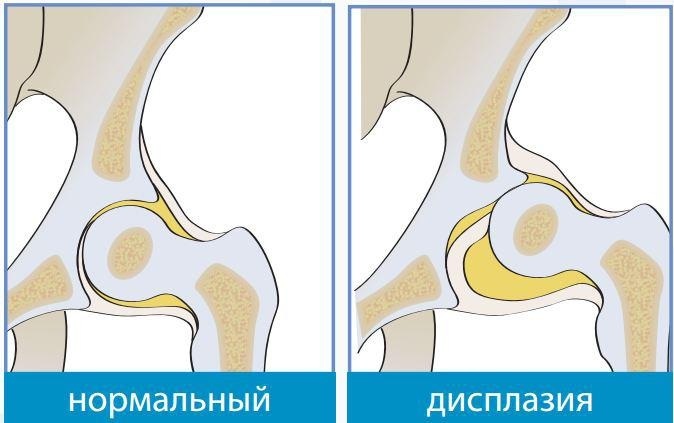
- congenital dislocation of the hip;
- anomalies of intrauterine skeletal development (deformed or partially missing limbs);
- congenital scoliosis.
The above pathologies are difficult to treat conservatively and surgically. The child is under the supervision of an orthopedic traumatologist from the first days after birth. The treatment of these diseases is long-term and requires long-term rehabilitation.
Acquired orthopedic pathologies
An orthopedic surgeon treats the following diseases of the musculoskeletal system, which are classified as acquired:
- osteocondritis of the spine;
- flat feet, curvature of the foot or clubfoot;
- bone fractures;
- dislocations of the joints of the upper and lower extremities;
- rheumatoid arthritis;
- injuries to bones, muscles, tendons;
- bursitis and arthrosis of the joints.

These diseases arise due to the hereditary predisposition of the patient, the presence of concomitant diseases of internal organs and systems, mechanical injuries.
Treatment methods
An orthopedist-traumatologist conducts a preliminary examination, prescribes an examination and further therapy of patients, admitted to an appointment with injuries of the lower and upper extremities, spine, skull, chest, pelvis, muscle systems.
Conservative methods
Conservative treatment methods include the use of corrective agents in the form of bandages, prostheses, corsets, special shoes, insoles for anatomically correct formation of the foot and soles.
In the case of fractures, bruises, cracks in bone tissue, dislocations of joints, fixation and plaster are used bandages that hold the limb until complete healing and restoration of the musculoskeletal apparatus.
Rheumatoid changes in the bone and connective tissue of the joints require the use of non-steroidal anti-inflammatory and antibacterial agents, which are selected based on the type of disease.
To prevent further deformity of the spine, salt deposits and maintain an even posture, physical therapy exercises are prescribed, the implementation of which is indicated for a patient with a specific pathology.
Surgical intervention
Surgical operation is a radical method of therapy when the restoration of the functions of the musculoskeletal system is impossible using conservative methods of treatment.
Surgery is indicated in the following cases:
- single or multiple fractures of the upper and lower extremities with displacement of bone tissue;
- the need to install metal structures on damaged parts of the spine;
- prosthetics of joints and vertebrae;
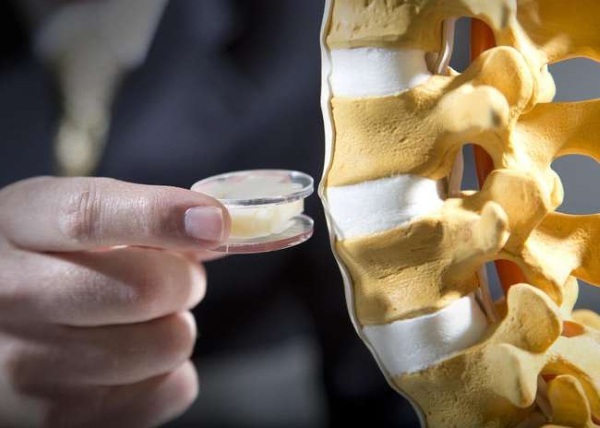
- traumatic limb amputation;
- detachment of a muscle or tendon;
- skull injuries requiring the removal of a part of the damaged bone with the installation of a metal plate.
The surgery is performed in a sterile room and the patient is under general anesthesia. The need for surgery is determined individually by an orthopedic doctor based on the results of X-ray, CT and MRI diagnostics. The average duration of the recovery period after operations on bone tissue, joints and muscular system is from 1 to 10 months.
An orthopedic traumatologist is a specialist who treats congenital and acquired diseases of the musculoskeletal system. The doctor carries out comprehensive diagnostics and prevention of scoliosis, bursitis, rheumatoid arthritis, arthrosis, osteochondrosis, flat feet, which allows you to timely detect pathology and start a complex treatment.
With the direct participation of the doctor, the process of prosthetics for patients who have undergone amputation is implemented.
Article design: Vladimir the Great
Video about orthopedic traumatologists
Interview with an orthopedic traumatologist:



